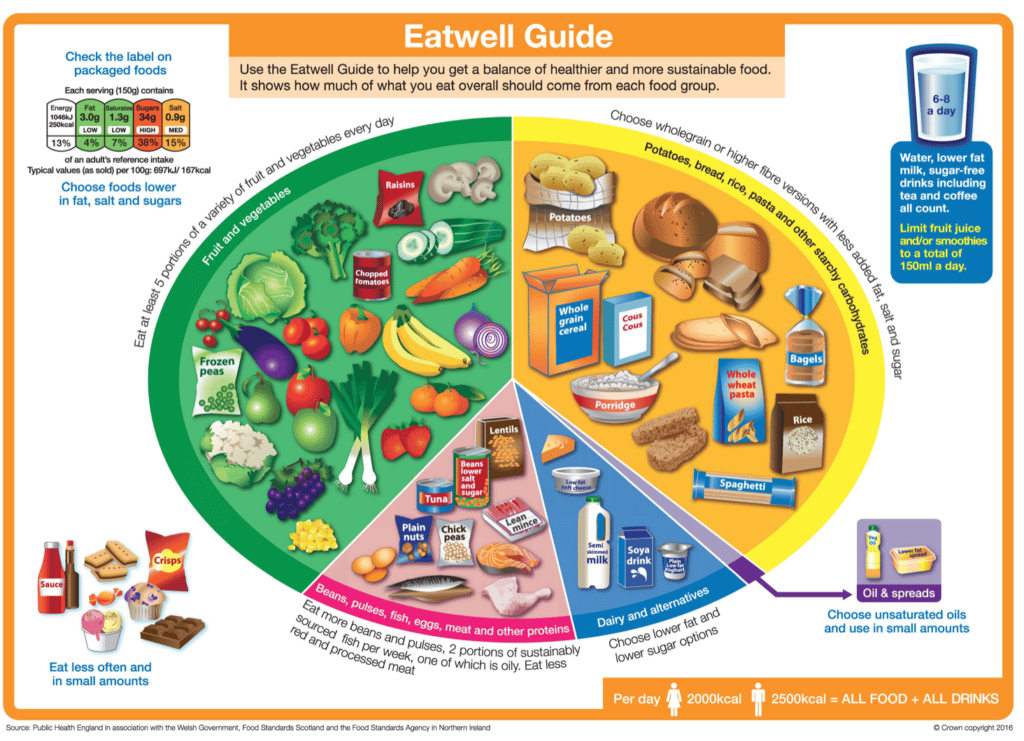Use the Eatwell Guide to ensure that your meals and snacks are full of the nutrients and minerals we need to keep us feeling full.
The Eatwell Guide is split into 5 sections: carbohydrates, proteins, fats, dairy and fruitsand vegetables.

During main meals, can think of the Eatwell Guide like our plate and build our meals arounds this. Carbohydrates (things like rice, bread, oats and pasta) should fill about 1/3 of our plate. Carbohydrates are key for giving us energy and using wholemeal versions provide a great source of fibre, keeping us full for longer.
Fruits and vegetables should fill another 1/3 of our plate. Fruits and vegetables give us vitamins and minerals we need to stay strong and healthy. They also are a great source of fibre, again helping us to feel full and allowing our digestive system to work properly.
The other 1/3 of our plate should be split between protein and dairy foods which build and repair our bones and muscles and give us energy. Sources of protein include meats, fish, eggs, tofu and beans. Dairy foods include milk, cheese, and yoghurts.
Fats like oils and spreads only take up a tiny portion of our plate, for example adding a thin layer of butter to toast using small amounts of oil during cooking.
When having snacks it is also important to meet as different sections of the Eatwell Guide as possible and this will make sure we feel sustained between meals. For example, having only crackers will provide us with carbohydrates but it is lacking in any other food group and we will likely feel hungry soon after eating this. If instead we have crackers with cheese and tomatoes or hummus we are meeting three of our Eatwell Guide food groups and will feel more full and energised between meals.
Foods like crisps and cakes are ok every once in a while, but make sure that overall your meals and snacks are balanced. Foods that are high in sugars and saturated fats might satisfy us immediately but without other food groups we will experience a spike in energy followed by a crash in energy and immediate hunger again, leading to increased snacking or grazing. If you do snack on high fat, salty or sugary food, try adding other foods to accompany it. For example, having a chocolate biscuit alongside a dollop of yoghurt with fruit, or eating crisps with hummus.




